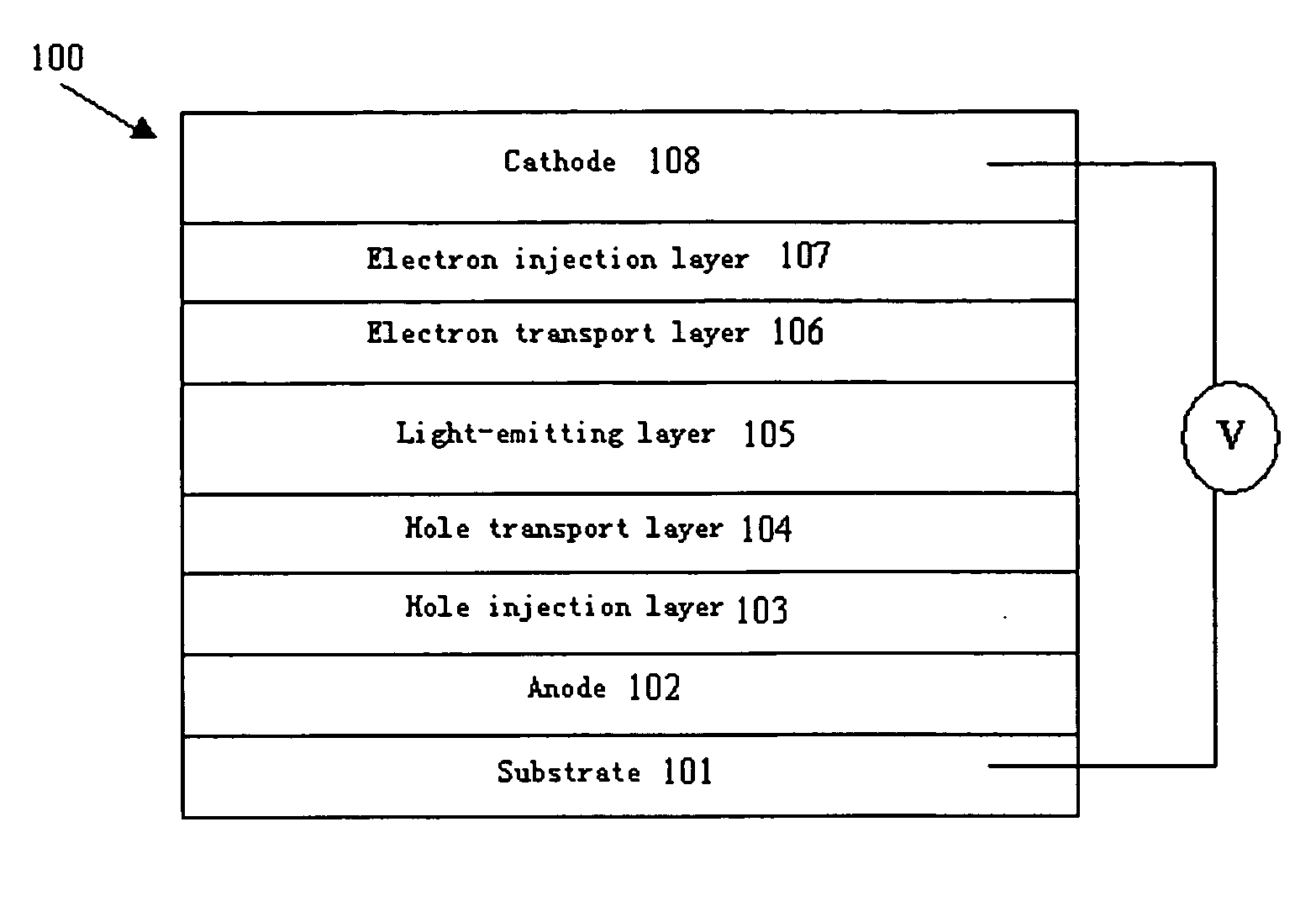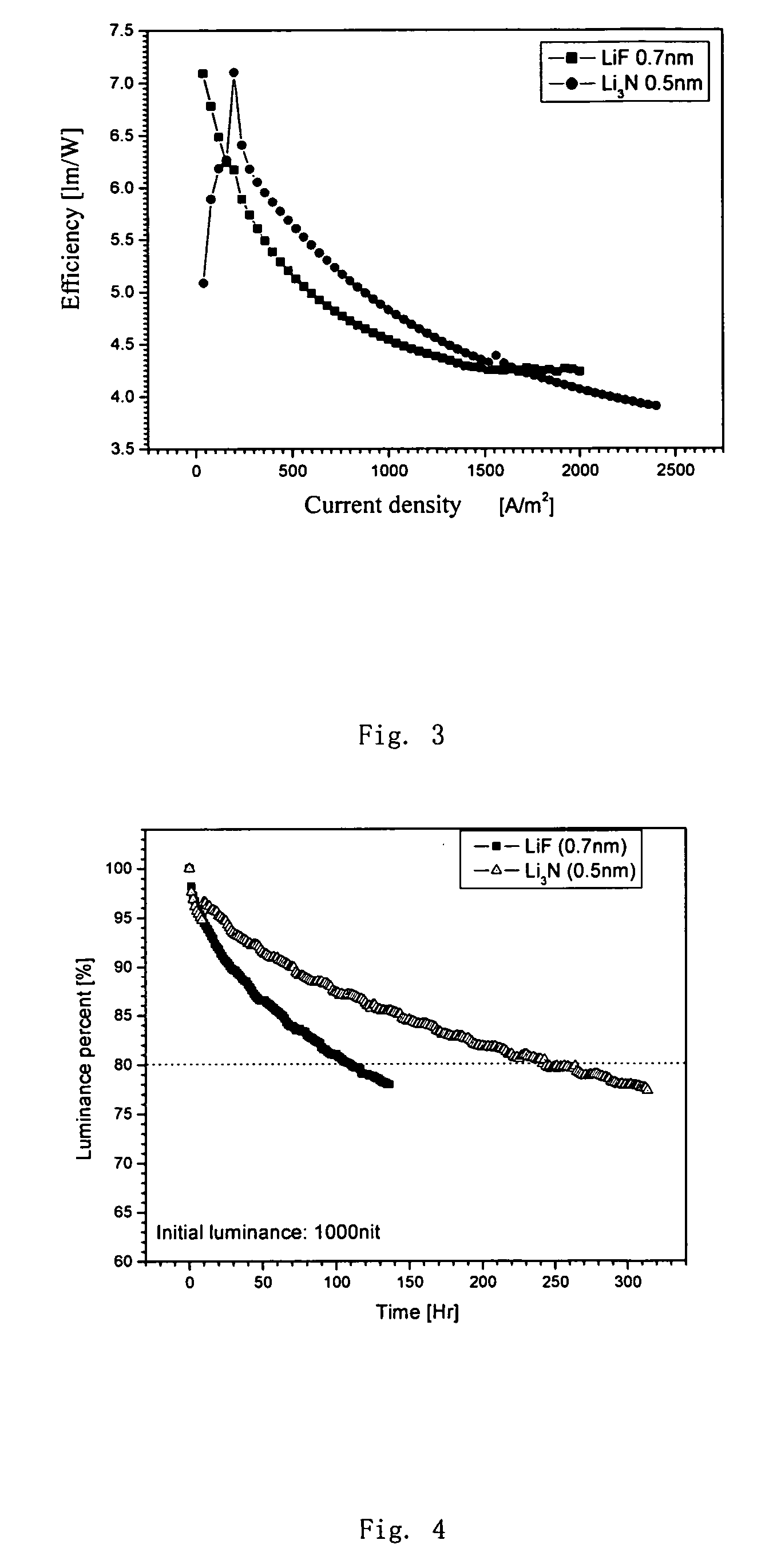Organic electroluminescence device
a technology of electroluminescence device and electroluminescence device, which is applied in the direction of discharge tube luminescnet screen, discharge tube/lamp details, coating, etc., can solve the problems of low work function metal activity and aptness, high film-forming temperature of materials, and relatively large poisonousness of materials, etc., to achieve high device luminance and efficiency, high device life, and high efficiency of electron injection
- Summary
- Abstract
- Description
- Claims
- Application Information
AI Technical Summary
Benefits of technology
Problems solved by technology
Method used
Image
Examples
embodiment 1
[0050] (1) Device structure:
[0051] ITO / MTDATA(30 nm) / NPB(30 nm) / Alq3(55 nm) / Li3N(0.8 nm) / AI(150 nm)
[0052] (2) Preparation of an organic layer:
[0053] The preprocessed glass substrate is placed in a vacuum chamber which is pumped to 1×10−3 Pa. A MTDATA film of 30 nm is evaporated at an evaporation rate of 0.1 nm / s. Then, a layer of hole transport material NPB of 30 nm is evaporated on above film at an evaporation rate of 0.1 nm / s. On the hole transport layer, Alq3 of 55 nm is evaporated for a light-emitting layer and an electron transport layer of the device.
[0054] Wherein the glass substrate is comprised of an ITO (Indium Tin Oxide) film and a substrate. The Sheet Resistance of the ITO film is 50Ω, and its thickness is 150 nm.
[0055] (3) Preparation of an electron injection layer:
[0056] After evaporating the electron transport layer, Li3N of 0.8 nm is evaporated at an evaporation rate of 0.008 nm / s under temperature of 350° C. for an electron injection layer of the device.
[0057...
embodiment 2
[0060] (1) Device structure:
[0061] ITO / MTDATA(30 nm) / NPB(30 nm) / Alq3(55 nm) / K3N(1.5 nm) / Al(150 nm)
[0062] (2) Preparation steps are the same with Embodiment 1 except after evaporating the electron transport layer, K3N of 1.5 nm is evaporated.
embodiment 3
[0063] (1) Device structure:
[0064] ITO / MTDATA(30 nm) / NPB(30 nm) / Alq3(55 nm) / Cs3N(2.0 nm) / Al(150 nm)
[0065] (2) Preparation steps are the same with Embodiment 1 except after evaporating the electron transport layer, Cs3N of 2.0 nm is evaporated.
PUM
 Login to View More
Login to View More Abstract
Description
Claims
Application Information
 Login to View More
Login to View More - R&D
- Intellectual Property
- Life Sciences
- Materials
- Tech Scout
- Unparalleled Data Quality
- Higher Quality Content
- 60% Fewer Hallucinations
Browse by: Latest US Patents, China's latest patents, Technical Efficacy Thesaurus, Application Domain, Technology Topic, Popular Technical Reports.
© 2025 PatSnap. All rights reserved.Legal|Privacy policy|Modern Slavery Act Transparency Statement|Sitemap|About US| Contact US: help@patsnap.com



